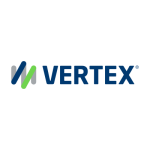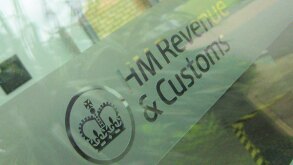The COVID-19 pandemic has significantly impacted consumer and business buying behaviour, with many increasingly turning to online sellers for the purchase of goods and services.
While the e-commerce boom is good news for these marketplaces and online merchants, it also requires them to pay close attention to their indirect tax obligations. Yet, with different rules and regulations to comply with, this is easier said than done.
EU VAT rules – what has changed?
Since July 2021, all businesses engaged in B2C cross-border transactions in Europe have been affected by new EU e-commerce VAT rules. The legislation is designed to prevent governments from missing out on indirect tax revenue from distance sellers, and to create a level playing field for all businesses. Yet, these changes have brought considerable complexity, in particular for marketplace tax professionals, with new VAT liabilities and compliance requirements to manage.
To avoid non-compliance and the risk of facing hefty penalties, it is crucial to act now by ensuring all the necessary measures are in place. Here are the areas of change you need to be aware of:
All remote sales to consumers are now subject to the VAT rates of the country where the purchaser resides;
In some scenarios marketplaces are considered ‘deemed suppliers’ and must charge VAT;
VAT exemption on imports of low value goods has ended;
All individual country sales thresholds for VAT are now replaced by one pan-EU threshold;
New Import One Stop Shop and One Stop Shop schemes can reduce multi-country registrations; and
Additional record-keeping regulations have been introduced for marketplaces in specific situations.
Navigating the EU tax landscape
You can remain compliant, facilitate smooth cross-border transactions, and avoid disruption to the customer journey by following these six simple steps.
1. Identify the correct VAT liability for each cart line item
It may sound obvious, but marketplace shopping carts can fill quickly and will often contain items from multiple sellers. With a mix of VAT liabilities, a marketplace is responsible for establishing who has liability for each item sold. Is it the underlying sellers? Is it the end customer? Or, is it the marketplace itself? The criteria to determine this can vary depending on the location of the customer, the location of the seller, and the value of the goods purchased.
Tax technology can help marketplaces and sellers manage complex line-item liability assessments to apply correct VAT rules to every basket, every time.
2. Classify products for third party sellers’ products
When a marketplace becomes the deemed seller for a transaction, it needs to classify the product in order to map it with appropriate VAT rates across the EU (or even wider). This can be a burdensome task given the vast product catalogues of marketplaces and sellers as well as the differing VAT rates across member states. Additional challenges are also present as marketplaces often do not have the ability to see or touch products to verify classifications.
Tax professionals should consider using specialist tax technology and/or AI techniques to help calculate tax rates accurately and in real-time during the checkout process. And, as VAT rates can change with very little notice, this technology can ensure these changes are managed effectively.
3. Application of currency conversions
Currency conversions must be done at the time of accepting payment, no matter if it is for one single transaction or many, as this will establish if the consignments are close to the €150 low value threshold. However, ever-changing foreign exchange (FX) rates can make this particularly tricky.
Specialist tax technology can help overcome this complexity by performing conversions in real time at the point of purchase. A robust solution should also be able to facilitate these currency nuances, for example, when goods are being purchased from multiple sellers in one transaction, it can automatically apply several FX conversions at the same time to establish a correct consignment value.
4. Understand invoicing obligations
The new EU e-commerce VAT rules have also created several different invoicing scenarios so it is important to know which ones apply to you and when. For example, marketplaces now need to comply with invoicing rules in 27 EU countries, issue possibly multiple invoices for line items in the shopping basket, and issue self-billing invoices for deemed purchases from their underlying sellers.
5. Ensure a rigorous seller onboarding process
To avoid issues with sellers resulting in a marketplace becoming non-compliant or liable for seller’s non-compliance, a rigorous seller onboarding process is vital alongside regular checks and reassessments.
Creating a robust onboarding process from the outset will help ensure EU VAT obligations are met. This means collecting (and storing) all required information about product classifications and about the sellers’ business from day one. It is also recommended by the EU that marketplaces should exercise ‘a duty of commercial care’ by providing guidance to sellers to ensure all information is accurate.
6. Keep transaction records
Under the new EU rules, marketplaces must store all transaction records for 10 years from the end of the year in which the supply took place and make them easily accessible and searchable so that information requests from tax authorities can be responded to quickly. Record-keeping requirements are strict which is why it is important to set up the right systems that ensure various information is collated and retained. This is another area where specialist tax technology can help.
Looking for more guidance on how these complex VAT rule changes affect you and what you can do about them? Download Vertex’s 'Marketplace eGuide: Practical implications of EU e-commerce VAT rules', here.
Peter Boerhof
VAT director, Vertex












